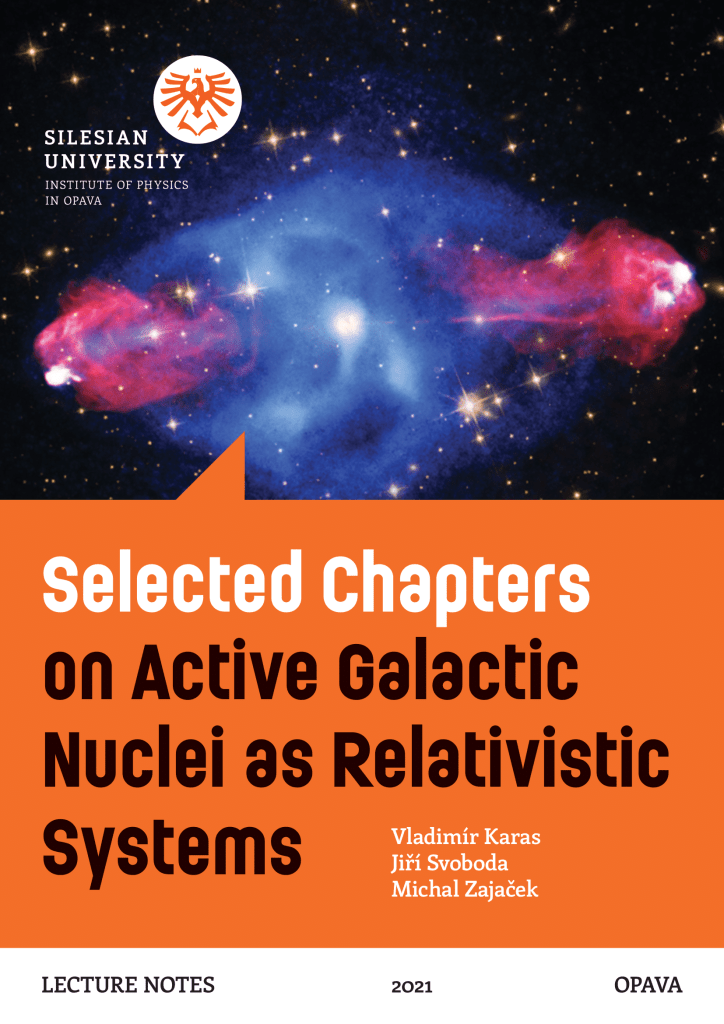V. Karas, J. Svoboda, & M. Zajaček
LECTURE NOTES
Download the Online version here

Astrophysical black holes in nuclei of galaxies are of indisputable relevance to the current research. These extreme objects are of immense interest to pure relativists as well as observational astronomers. This diversification is reflected in varied approaches that people adopt to the problem. Mathematically minded theorists take more interest in analytical solutions to Einstein’s equations and idealized systems where the role of strong gravity can be exposed. Observers want to actually see the gas flows swirling in the form of an accretion disk or a torus. Astronomers often invoke disk-type accretion to explain spectral features observed in galactic nuclei, although the detailed physics of accretion flows still remains incomplete.
Despite that the processes in strong gravity govern only the innermost regions of accretion disks, their role is quickly diminished with the distance from the source. Non-gravitational physics plays a crucial role and it often dominates the acceleration and emission processes. In order to see where the limitations of our models are, it is useful to discuss simplified and general analytical models along with particular astronomical objects.
These lecture notes present an overview of selected aspects of physical processes occurring in the inner regions of Active Galactic Nuclei (AGN). Observational evidence strongly suggests that strong gravitational fields play a significant role in governing the energy output of AGN and their influence on the surrounding medium due to the presence of a supermassive black hole (SMBH) or a system of SMBHs undergoing a merger. We begin by an account of observational properties of AGN, their basic structural components and unification scenarios, and the arguments for the presence of SMBHs in their cores. Subsequently, in more detail, we discuss selected phenomena that are related to black-hole accretion and relevant for the emerging radiation signal and the acceleration of matter in AGN cores.
In order to reduce an unnecessary overlap with numerous reviews and textbook chapters on the similar subject, we focus on just a few topics, such as the launching scenarios of nuclear outflows and jets that start and pre-collimate in the immediate vicinity of black holes, at distance of only a few gravitational radii, and then can reach spectacular length-scales of ∼Mpc, extending far beyond the host galaxy. We also discuss the interaction between magnetic and gravitational fields in the strong-gravity regime of General Relativity. Some more recent aspects of the AGN unification scheme are included and quite a large number of references are provided to relevant papers and textbooks at the end of the volume. The interested reader is invited to consult the original works, which can provide an exciting context to the lively research on Active Galactic Nuclei.
Published in October 2021 by the Institute of Physics, Silesian University in Opava, Czech Republic

The publication was supported by the European Union project no. CZ.02.2.69/0.0/0.0/18_058/0010238
ISBN 978-80-7510-475-5 (Print)
ISBN 978-80-7510-476-2 (Online)